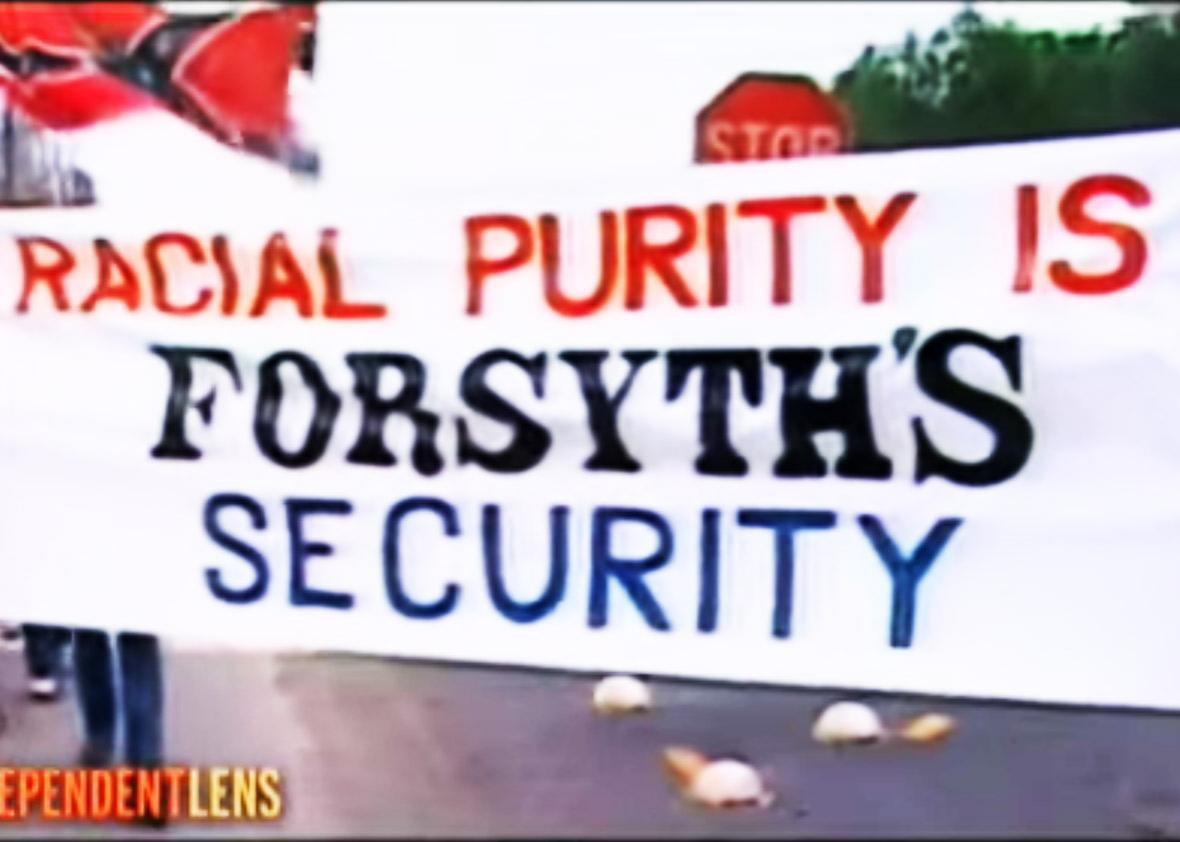The most controversial candidate on the ballot in my native Forsyth County, Georgia, about 40 miles north of Atlanta, is not Donald Trump. It’s Daniel Blackman, a Democrat running for the state senate, who is notable simply for being on the ballot at all.
What makes Blackman’s bid so surprising, and potentially historic, is that he is the first black person ever to run for office in Forsyth. How, you might ask, is that possible in America, in 2016? The answer lies in Forsyth’s long history of racial violence and its reputation, for much of the 20th century, as Georgia’s most dangerous “white county.” I grew up in Forsyth, and during my childhood there I heard the legend many times: how “a long, long time ago,” a young white woman was found beaten and bloody in the woods. When she died a few weeks later, people said, bands of white men terrorized the county’s black citizens, who had no choice but to run for their lives.
I’ve spent much of the past decade searching for the truth behind that old ghost story and documenting not just that the racial cleansing of Forsyth took place but where, when, how, and to whom. I learned that over the course of two months, in September and October of 1912, whites violently expelled all 1,098 members of what had been a large and vibrant black community. The terror campaign was fueled by widespread hysteria, as whites became convinced that a “black rebellion” was underway.
Deep-seated bigotry was undoubtedly a precondition for the racial cleansing, but its immediate cause was powerful and irrational fear. Viewed from the other end of the 20th century, the paranoia of local whites seems downright pathological. The black people of Forsyth were field hands, sharecroppers, servants, cooks, schoolteachers, and tradesmen, but in the popular imagination of the county’s whites they were something more sinister. The papers described a group of poor black teenagers as “fiendish … low-browed, gorilla-type negroes” and claimed that they had raped and bludgeoned an 18-year-old white woman named Mae Crow. In the wake of her death, white mobs set out across the county, using shotguns, torches, kerosene, and sticks of dynamite to drive black residents from their homes. Scores of sharecroppers’ cabins were set ablaze, and in October the local mayor wrote to the governor, warning that five black churches had been burned to the ground. By the close of 1912, it was widely reported that every single black resident had fled the violence and that the mobs of Forsyth had successfully created a “whites-only” world in the Georgia foothills.
The events of 1912 might sound like ancient history, but when I was in high school, the angry white people of Forsyth once again made national news, after a clash in 1987. That was the year peace marchers—including my mother, father, and sister—protested the ongoing segregation of the county and were set upon by furious counterprotesters, who threw rocks, bottles, and bricks in an effort to drive black marchers out of the county and to enforce the 75-year-old racial ban. The first “Brotherhood March” had to be abandoned after local police began arresting armed men in the crowd, and the following week 20,000 peace marchers came to Forsyth, to celebrate the Martin Luther King national holiday and to speak out against Georgia’s last bastion of de facto segregation.
Much has changed in the 30 years since, and in 2016 the county’s population is now 10 percent Latino, 8 percent Asian, and 3 percent black. A Georgia native and the son of a former Army ranger, Blackman and his wife Jeanelle moved to Forsyth in 2012 and currently have three children attending Forsyth County schools. With no personal experience of the county’s troubled past, they are part of a wave of newcomers who have helped to dispel the county’s old reputation for bigotry. The Forsyth they know is a typical affluent suburb of Atlanta, and on land that was once stolen from black farmers, there are now shopping malls, gleaming medical centers, and gated communities full of multimillion-dollar homes.
But in a place that was “whites only” for nearly a century—and which began to tolerate a small group of black residents only in the mid-1990s, when tens of thousands of newcomers began moving north from Atlanta—American politics in 2016 rings with old echoes. While Blackman is running on a moderate platform of jobs creation, renewable energy, and public transportation, his opponent, incumbent Michael Williams, is a full-blown member of the Trumpish right. He has embraced even the most widely condemned Trump proposals, including his calls for a ban on all immigration by Muslims and the creation of a national “Muslim registry.” On his campaign website, Williams defends the idea of a religious test for those seeking entry into the U.S. and says the threat from Muslim immigrants “should be frightening to anyone.”
In Forsyth, the anti-Muslim xenophobia of men like Trump and Williams is a return to all too familiar ways. And while Blackman may be fighting an uphill battle in a place once synonymous with bigotry, his decision to run for elected office here is an act of bravery—a confrontation not just with the ugly politics of his opponent but with history itself. Forsyth’s current prosperity rests on a foundation of lynching, arson, and communal theft, but Blackman’s campaign has given the people of the county a chance to commit an act of quiet revolution: to rebuke that shameful past and turn toward a more just future.
